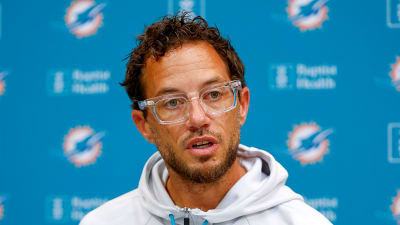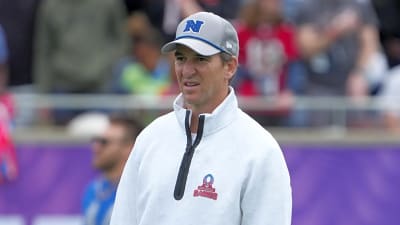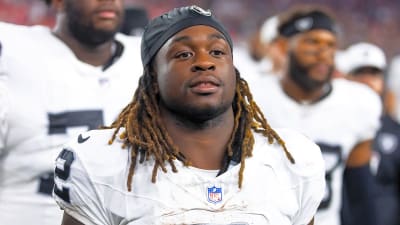
The 40-41 Rays are among the key teams to watch as the trade deadline draws near. While they’re buried in the American League East and unlikely to close their current 10.5-game deficit, they’re only four games out of the final American League wild-card spot. At the same time, Tampa Bay could soon find itself with a growing number of big-league starters — more than it has room to plug into its rotation.
Katie Woo, Patrick Mooney and Will Sammon of The Athletic report that Tampa Bay is anticipating righty Shane Baz and left-hander Jeffrey Springs will be ready to rejoin the rotation before long; both pitchers are on the mend from Tommy John surgery — Baz’s performed in late 2022 and Springs’ performed early last season. Baz completed a minor league rehab assignment and has continued building up in Triple-A.
Once regarded as perhaps the top pitching prospect in the game, the 25-year-old Baz got a rough start during his rehab stint but has now rattled off five starts with a 1.57 ERA and 35-to-10 K/BB ratio in 23 innings. Springs has also been in rehab for several weeks but has yet to pitch more than 2 1/3 innings in an outing. Before his Tommy John procedure, the now-31-year-old Springs had emerged as the latest in a long line of diamond-in-the-rough pitching finds for the Rays.
Tampa Bay acquired Springs and righty Chris Mazza in a trade that sent catching prospect Ronaldo Hernandez to Boston. Springs was a journeyman lefty at the time who’d posted a 5.42 ERA over three partial big-league seasons. With the Rays, he broke out to a 2.53 ERA, 29.5% strikeout rate and 6.3% walk rate in 196 innings. Tampa Bay rewarded that breakout with a four-year, $31M extension — but Springs unfortunately went under the knife just three starts into the 2023 campaign.
With that pair of arms on the mend — to say nothing of righty Drew Rasmussen, who underwent an internal brace procedure just under one year ago — the Rays indeed have a mounting stock of arms. The Athletic trio notes in their report that of the team’s current starters — Zach Eflin, Aaron Civale, Zack Littell, Taj Bradley and Ryan Pepiot — Civale and Littell are the likeliest to be available in trades. Both pitchers are in their second year of arbitration eligibility and controlled through the 2026 season. Civale, whom the Rays acquired last summer in a trade sending first base prospect Kyle Manzardo to the Guardians, is earning $4.9M this year. Yet another product of the Rays’ almost comical hidden-gem factory (he was claimed off waivers from Boston), Littell is earning just $1.8M.
Of the two, Littell is enjoying the stronger season but also has the shorter track record. He’s pitched 86 1/3 innings of 4.17 ERA ball with a roughly average 22% strikeout rate against an exceptional 4.3% walk rate. Since the Rays took the former starter-turned-reliever and plugged him back into a rotation role last July, he’s given them 27 starts with a 3.98 earned run average, 20.2% strikeout rate and even more impressive 3.6% walk rate. (I profiled Littell’s breakout in-depth earlier this season in a piece for MLBTR Front Office subscribers.)
Civale’s time with the Rays hasn’t gone as the team had hoped when acquiring him last year. He’s posted strong strikeout and walk rates alike, but his sharp K-BB profile has been undercut by a penchant for serving up home runs. The 29-year-old righty has started 26 games for Tampa Bay dating to last summer’s trade but logged a disappointing 5.26 ERA. Despite upping his strikeout rate from 21.1% with the Guards to 25.4% with the Rays and maintaining his terrific command (6.1% walk rate in Cleveland; 6.2% with Tampa Bay), Civale’s ERA has spiked from 3.77 with his former club to 5.26 with his current one. After yielding 1.19 homers per nine frames in five seasons with Cleveland, Civale has been tagged for a troubling 1.56 big flies per nine since heading to St. Petersburg.
There hasn’t been a major change in Civale’s repertoire that’s prompted that flaw. He’s throwing more sliders this year at the expense of his cutter. However, it’s not an overwhelming change in usage rates, and the righty is still using the same blend of six pitches (four-seam, cutter, sinker, slider, curveball, and the very occasional splitter) that he used late in his Guardians tenure. His velocity has held up as well.
Despite Civale’s struggles this season, there’d be no shortage of teams interested in adding him and/or Littell to their staff for the next season and a half. Both arms are affordable — particularly for teams with CBT concerns — and their established rotation arms, in general, will be in short supply. That’s all the more true given the recent injuries to trade candidates Jesus Luzardo, Braxton Garrett and Patrick Sandoval. The leaguewide arm shortage could position the Rays to deal from their current rotation and then replace whichever starter is traded with an in-house arm returning from injury.
Darragh McDonald and I discussed this possibility with the Rays on this week’s episode of the MLBTR Podcast, also touching on the possibility of the Rays drawing interest in right-hander Zach Eflin. He’s arguably more important to the team’s staff than Civale or Littell, but he’s also the most expensive starter on the roster. Eflin inked a three-year, $40M deal in free agency before the 2023 season. It’s a heavily backloaded pact that will pay Eflin $18M in 2025 — a hefty number by the Rays’ typically thrifty standards. With Springs, Baz, and Rasmussen all on the mend and able to join young arms like Baz, Bradley, and Pepiot in next year’s rotation, the always cost-conscious Rays will presumably be open to listening on Eflin while pondering a similar gamut to the Littell/Civale scenario laid out in The Athletic’s report.
It bears emphasizing that even if the Rays end up selling — or, as they often have in the past, operating on both the “buy” and “sell” side of the market — Sammon, Woo and Mooney report that the front office is not interested in a large-scale rebuild. Even if the Rays fall out of the 2024 race, the plan will be to reload, take aim, and contend again in 2025. Given the wealth of young and/or cost-controlled pitching and a perennially deep farm system that keeps churning out interesting young hitters, the Rays likely feel they have the foundation of a contending club largely in place.
As is so often the case this time of year, the Rays appear positioned as one of the teams who will, in many ways, dictate a fair bit of the deadline’s dealings. Whether they rattle off several wins and thrust themselves into Wild Card position, maintain the status quo as a bubble team, or drop further down the standings, their slate of rehabbing quality arms gives them the flexibility to shop current big league arms — be it for other big leaguers in areas of need or near-MLB prospects who can help in 2025.
More must-reads:
- The most unexpected MLB pitchers who threw a no-hitter or perfect game
- After announcing retirement, Clayton Kershaw's next stop is Cooperstown
- The 'Active pitchers with at least one 200-K season' quiz
Breaking News
Trending News
Customize Your Newsletter
 +
+
Get the latest news and rumors, customized to your favorite sports and teams. Emailed daily. Always free!








